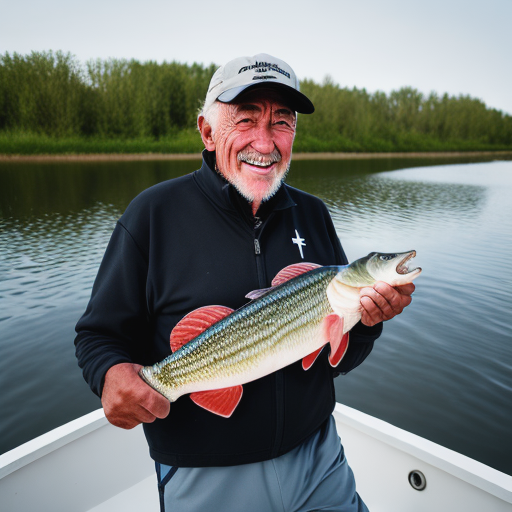Czech nymphing is a popular technique in fly fishing that can yield successful results. It involves using a specific leader setup to effectively nymph for trout. In this article, we will explore various tips and tactics for perfecting your Czech nymphing leader setups. We will discuss the best materials, lengths, and formulas to use, as well as how to rig your leader for optimal performance. Whether you’re a beginner or an experienced angler, this guide will help you enhance your Czech nymphing skills.
Key Takeaways:
- Choose the right leader materials, such as tapered leaders and high-vis monofilament, for your Czech nymphing setup.
- Consider the length of your leader and adjust it based on fishing conditions to maximize your success.
- Rigging your Czech nymphing leader correctly is essential for presentation and drift.
- Choose flies that imitate the aquatic insects trout feed on, and be mindful of the weight of your flies.
- Master the presentation techniques, reading the water, and adjusting your approach for different fishing conditions.
The Basics of Czech Nymphing
Czech nymphing is a technique that originated in Europe and has gained popularity worldwide in recent years. It is highly effective in fast-moving water and can yield impressive results for fly fishing enthusiasts. Mastering the basics of Czech nymphing is essential for success in this technique.
Czech Nymphing Technique
The Czech nymphing technique involves using a weighted nymph rig and fishing close to the bottom of the water column. To effectively present your flies, it is important to maintain a tight line and have direct contact with your flies at all times. This allows you to detect subtle strikes and ensure a natural drift.
Czech Nymphing Rig
The rig setup for Czech nymphing typically consists of a long leader, heavy nymphs, and split shot weights. The long leader helps to achieve better control and drift, while the heavy nymphs and split shot weights enable your flies to sink quickly to the desired depth. It is important to adjust the weight of your rig based on the depth and speed of the water you are fishing in.
Czech Nymphing Flies
The flies used in Czech nymphing are designed to imitate the aquatic insects that trout feed on. They are typically tied with sparse materials and weighted to sink quickly. Some common Czech nymphing flies include caddis larvae patterns, scud patterns, and various nymph imitations. It is important to have a selection of flies that match the prevalent insects in the water you are fishing.
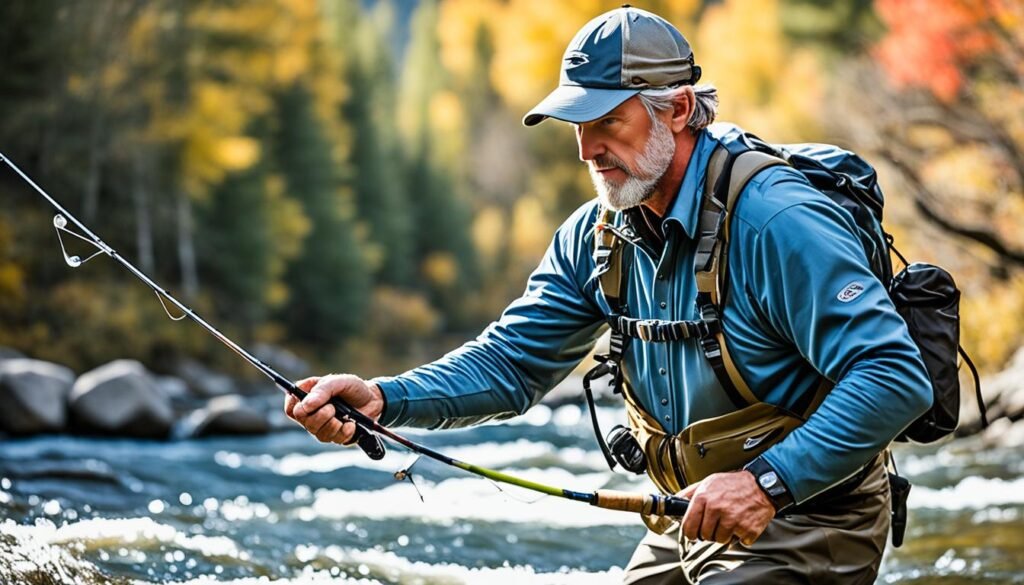
By mastering the basics of Czech nymphing, you can significantly improve your success in fly fishing. Understanding the technique, rig setup, and fly selection is crucial for effectively nymphing in fast-moving water. In the next section, we will explore the different leader materials used for Czech nymphing and their advantages.
Choosing the Right Leader Materials
The choice of leader materials is critical to the success of your Czech nymphing endeavors. The right materials will ensure proper presentation and enable you to effectively fish at different depths. Take a look at some commonly used leader materials for Czech nymphing:
Tapered Leaders
Tapered leaders are popular among Czech nymphing enthusiasts due to their versatility and smooth turnover. They provide excellent control and allow for delicate presentations. A tapered leader helps you maintain contact with your flies and detect even the subtlest strikes. Consider using a thinner diameter and longer length for better nymphing performance.
High-Vis Monofilament
High-vis monofilament is another essential material for your Czech nymphing leader setup. Its bright color makes it easy to track your leader and detect strikes. This helps ensure that you maintain the necessary contact with your flies. Opt for a high-vis monofilament with a diameter suitable for the water conditions you’re fishing in.
Fluorocarbon Tippet
Using fluorocarbon tippet as the terminal end of your leader can greatly enhance your Czech nymphing success. Fluorocarbon has a refractive index similar to water, making it nearly invisible to fish. It also sinks faster than monofilament, allowing your nymphs to reach the desired depth more quickly. Utilize fluorocarbon tippets in the appropriate diameter and length for your fishing situation.
Sighter Material
Sighter material is an invaluable component of a Czech nymphing leader. It allows you to detect subtle strikes and provides insights into how your nymphs are drifting in the water column. Sighter materials with high visibility, such as brightly colored monofilament or specialized indicator material, are ideal for detecting the most delicate takes. Experiment with different sighter materials to find the one that suits your preferences.
By selecting the right combination of leader materials, you can build a Czech nymphing leader that meets your specific requirements and enhances your chances of hooking into some impressive trout.

The Ideal Length for a Czech Nymphing Leader
The length of your Czech nymphing leader is a critical factor that can significantly impact your success in catching trout. The right leader length allows for better control and drift, enhancing your chances of enticing more strikes. However, the ideal leader length can vary depending on the fishing conditions and the specific river or stream you’re targeting.
As a general guideline, a longer leader, typically ranging from 10 to 15 feet, is advantageous in most Czech nymphing situations. The added length provides better line control, allowing you to maintain direct contact with the flies and detect subtle strikes. It also facilitates a longer drag-free drift and increases your ability to cover a larger area of the water column.
On the other hand, in situations where casting space is limited or the water is shallow, a shorter leader may be more manageable. A 7 to 9-foot leader can be effective in such conditions, allowing for increased maneuverability and enabling you to target specific areas with precision.
Adjusting the Leader Length
Keep in mind that the ideal leader length may vary based on factors such as water depth, current speed, and the presence of obstacles or vegetation. It’s essential to assess the fishing conditions and make adjustments accordingly. Here are a few tips for adjusting the leader length:
- For fishing deeper pools or faster currents, lengthen your leader to ensure your flies reach the desired depth and maintain a natural drift.
- In shallow or slower-moving water, consider shortening your leader to prevent excessive drag and allow your flies to sink quicker.
- If you’re fishing in a highly technical or heavily pressured area, experimenting with different leader lengths can help you find what works best for the specific conditions.
Ultimately, finding the right leader length for Czech nymphing requires some experimentation and adaptation. Take into account the unique characteristics of the water you’re fishing and adjust your leader length accordingly to maximize your chances of success.
| Advantages of a Longer Leader | Advantages of a Shorter Leader |
|---|---|
|
|
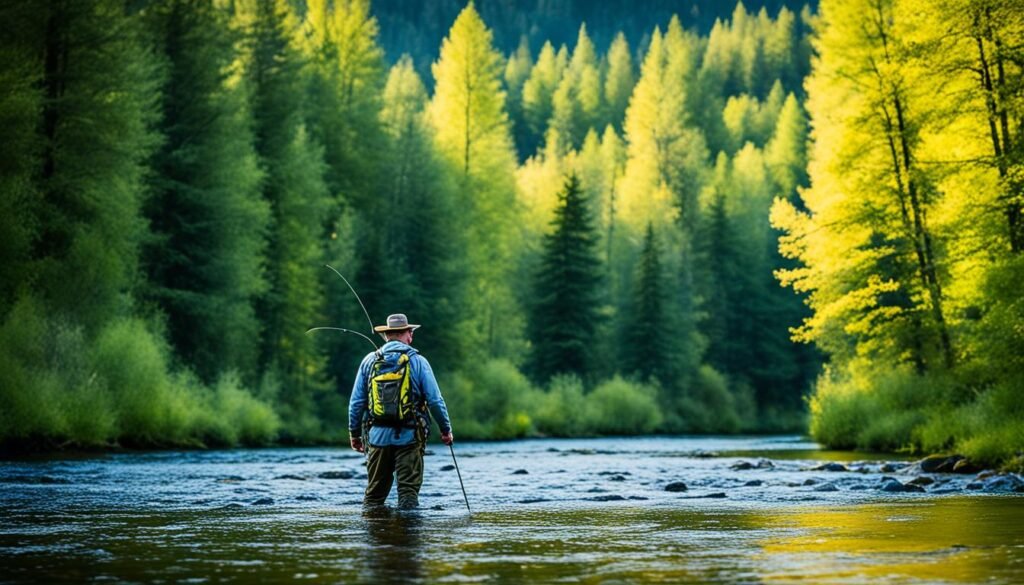
Rigging Your Czech Nymphing Leader
Rigging your Czech nymphing leader correctly is essential for effective fishing. The proper rig setup ensures that your flies are presented naturally and drift along the bottom of the water column. Follow this step-by-step guide to rig your Czech nymphing leader and maximize your success on the water.
Materials
Before rigging your leader, gather the necessary materials:
- Czech nymphing leader
- Tippet rings
- Fluorocarbon tippet
- Fly selection
- Knot tying tools
Step 1: Attach Tippet Rings
Start by attaching tippet rings to the end of your Czech nymphing leader. Tippet rings provide a convenient connection point for your tippet and flies.
Pro Tip: Make sure to use a strong knot, such as the improved clinch knot, to securely attach the tippet rings to your leader.
Step 2: Add Fluorocarbon Tippet
Next, add a section of fluorocarbon tippet to the tippet rings. The length of the tippet will vary depending on the fishing conditions and depth you’re targeting.
Step 3: Tie on Your Flies
Once the tippet is attached, tie on your Czech nymphs. Use a quality knot, such as the clinch knot or the Davy Knot, to secure the flies to your tippet.
Step 4: Adjust Depth and Weight
Depending on the water depth and current speed, you may need to adjust the weight of your flies or add additional split shot to reach the desired depth.
Step 5: Test Your Rig
After rigging your leader, give it a few test casts to ensure everything is properly balanced and drifting naturally. Make any necessary adjustments before starting to fish.

Now that your Czech nymphing leader is rigged, you’re ready to hit the water. Remember to stay in touch with your flies, keep your leader tight, and focus on reading the water to anticipate strikes. By following these steps and techniques, you’ll be well on your way to mastering the art of Czech nymphing.
Choosing the Best Flies for Czech Nymphing
Choosing the right flies is crucial for successful Czech nymphing. The flies should imitate the aquatic insects that trout feed on, and they should be properly weighted to sink to the desired depth. Whether you’re a beginner or an experienced angler, selecting the best flies for Czech nymphing can greatly enhance your chances of hooking into trout.
Here are some common types of flies that are commonly used in Czech nymphing:
- 1. Caddis Larvae: Caddis larvae are a staple food source for trout. The nymphs are typically tan or olive in color and have a slim, cylindrical body. They are effective in most river and stream environments.
- 2. Sedge Patterns: Sedge patterns imitate the adult stage of caddis flies. These flies are typically tied with a densely packed wing and a slender body. They are effective during caddis hatches and when trout are actively feeding on the surface.
- 3. Mayfly Nymphs: Mayfly nymphs are another important food source for trout. They vary in size and color, depending on the species. It’s important to have a selection of mayfly nymph patterns in your fly box to match the natural insects found in the water.
- 4. Stonefly Nymphs: Stonefly nymphs are large, burrowing insects that can be found in fast-flowing rivers and streams. They are typically tied with a heavily weighted body and a pronounced profile. Using stonefly nymph patterns can be effective when targeting larger trout.
To determine the best flies for Czech nymphing in different fishing conditions, it’s helpful to consult local fly shops, fishing guides, or online resources specific to your fishing location. Experienced anglers in the area will be able to provide valuable insight into what flies are currently working best.
Remember, Czech nymphing is a technique that requires precise presentations and careful observation of the trout’s feeding behavior. Pay close attention to the insects present in the water and choose flies that closely match the size, shape, and color of those naturals. With the right flies and a well-rigged leader, you’ll be well on your way to Czech nymphing success!
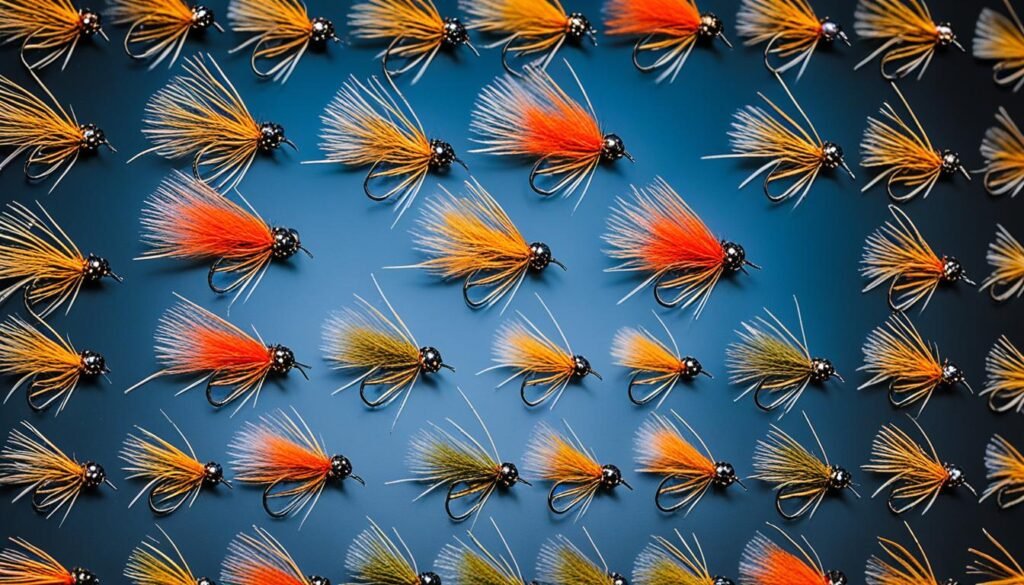
Tips and Tactics for Czech Nymphing Success
Becoming proficient in Czech nymphing requires practice and finesse. To help you improve your Czech nymphing skills, here are some valuable tips and tactics that you can incorporate into your fishing strategy:
Presentation Techniques
When Czech nymphing, it’s crucial to achieve a natural drift that imitates the motion of the nymphs in the water. To achieve this, consider the following:
- Cast upstream to allow the nymphs to drift naturally downstream.
- Maintain a tight line throughout the drift to have better control and detect subtle strikes.
- Keep the flies close to the bottom, where trout are most likely to find them.
Reading the Water
Understanding the water conditions and how trout behave in different situations is key to successful Czech nymphing. Take note of the following:
- Look for areas with fast-moving water, as this is where Czech nymphing is most effective.
- Target pockets, seams, and riffles where trout tend to gather and feed.
- Observe the water’s surface for any signs of insect activity that can guide your fly selection.
Detecting Strikes
Trout strikes can be subtle and hard to detect, especially when Czech nymphing. Try these techniques to improve your strike detection:
- Stay focused and watch your sighter or leader for any irregular movement or hesitation.
- Pay attention to any sudden stops or sideways movement of the line.
- Develop a sense of timing by setting the hook at the slightest indication of a strike.
Adjusting Your Approach
Adapting your techniques based on fishing conditions can significantly increase your chances of success. Consider these adjustments:
- Vary your fly presentation by using different weights, sizes, and patterns to find what works best.
- Experiment with different nymphing techniques, such as short-line or contact nymphing, to see what produces the most strikes.
- Be patient and persistent, as each fishing situation may require different tactics for consistent success.
By incorporating these tips and tactics into your Czech nymphing approach, you can enhance your skills and increase your chances of a successful fishing trip.
Now, let’s take a closer look at the recommended equipment for Czech nymphing in the next section.
Essential Equipment for Czech Nymphing
Having the right equipment is essential for effective Czech nymphing. Here are the key gear items you’ll need to enhance your nymphing experience:
Fly Rods
When selecting a fly rod for Czech nymphing, look for a lightweight and sensitive rod that can handle the weight of nymph rigs. Opt for a 10-11 foot rod with a fast or medium-fast action to provide the necessary casting power and sensitivity to detect strikes.
Reels
Choose a reel with a smooth and reliable drag system that can handle the demands of Czech nymphing. Look for a large arbor reel to reduce line memory and provide quick line retrieval.
Fly Lines
For Czech nymphing, a specialized European nymphing line or a standard weight-forward floating line will work well. These lines have a long, thin, and level taper that allows for precise nymphing presentations.
Leaders and Tippets
Czech nymphing leaders require specific setups. Consider using a French or Czech nymphing leader designed for Euro nymphing techniques. These leaders typically consist of a long, tapered mono leader with a sighter section or fluorocarbon tippet. High-vis monofilament or fluoro tippet material is ideal for detecting subtle strikes.
Accessories
To complete your Czech nymphing gear, here are some recommended accessories:
- Tippet rings: These tiny rings allow for easy and quick tippet changes, increasing the versatility of your leader setup.
- Strike indicators: Use small, lightweight indicators that won’t impede the delicate presentation of your nymph rig.
- Weight: Carry a range of split shot weights to adjust the depth at which your nymphs drift.
When choosing gear for Czech nymphing, it’s important to consider your personal fishing preferences and budget. Quality gear can significantly enhance your success and overall nymphing experience. Remember to select gear that suits your fishing style and provides the sensitivity and control required for Czech nymphing.
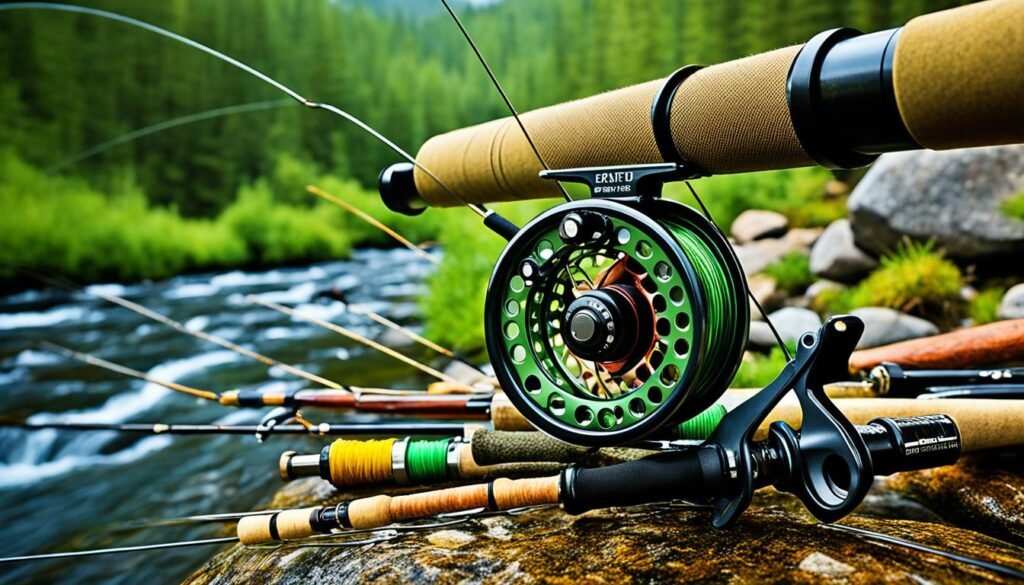
With the right equipment in hand, you’ll be well-prepared to tackle Czech nymphing and increase your chances of landing more trout.
Conclusion
Czech nymphing is a versatile and effective method for catching trout. By mastering the leader setups and employing the right techniques, you can greatly improve your success in nymph fishing. This article has provided a comprehensive guide to Czech nymphing leader setups, offering insights into materials, lengths, rigging methods, fly choices, and equipment.
By following the tips and tactics provided, you can enhance your Czech nymphing skills and enjoy a more rewarding fly fishing experience. From choosing the right leader materials to rigging your leader properly, each aspect contributes to your overall success on the water.
Remember to experiment with different setups and adjust your approach based on fishing conditions. Becoming proficient in Czech nymphing may take time, but the results are worth it. So grab your gear, hit the water, and embrace the excitement of Czech nymphing!
FAQ
What is Czech nymphing?
Czech nymphing is a fly fishing technique that involves using a weighted nymph rig and fishing in fast-moving water. The goal is to maintain a tight line and keep the flies close to the bottom of the water column.
What are the key components of a Czech nymphing leader setup?
A Czech nymphing leader setup typically consists of tapered leaders, high-vis monofilament, fluorocarbon tippet, and sighter material. These components help with presentation and fishing at different depths.
What is the ideal length for a Czech nymphing leader?
The ideal length for a Czech nymphing leader can vary depending on fishing conditions. A longer leader allows for better control and drift, while a shorter leader can be more manageable in certain situations.
How do I rig a Czech nymphing leader?
Rigging a Czech nymphing leader involves attaching the flies, using tippet rings, and tying the necessary knots. It’s important to ensure that the flies are presented naturally and drift along the bottom of the water column.
What types of flies should I use for Czech nymphing?
Flies used for Czech nymphing should imitate the aquatic insects that trout feed on. Common choices include caddis larvae and sedge patterns. It’s important to use properly weighted flies that sink to the desired depth.
How can I improve my Czech nymphing skills?
To improve your Czech nymphing skills, focus on presentation techniques, reading the water, detecting strikes, and adjusting your approach based on fishing conditions. Practice and finesse are key to becoming proficient in this technique.
What equipment do I need for Czech nymphing?
The necessary equipment for Czech nymphing includes fly rods, reels, lines, and accessories. Specific gear suitable for Czech nymphing, such as nymphing rods and euro nymphing lines, can enhance your nymphing experience.

